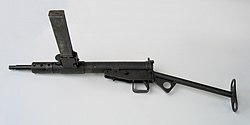The topic of this article may not meet Wikipedia's notability guideline for events .(February 2022) |
| Carlton Tower and Portman Hotel Shootings | |
|---|---|
| Part of The Troubles | |
 The Jumeirah Carlton Tower, previously just the Carlton Tower hotel which the IRA fired shots at | |
| Location | Portman Square, London & Cadogan Place, Knightsbridge, London, England |
| Date | 19 January 1975 |
Attack type | shooting |
| Weapons | Sten & M1 carbine |
| Deaths | 0 |
| Injured | 12 |
| Perpetrators | Provisional IRA |
On 19 January 1975 the Provisional IRA's Balcombe Street Gang opened fire with automatic weapons on two hotels in London, England. Twelve people were injured by broken glass. The IRA carried out a similar attack a month before, and attacked one of the hotels again a few months after.
Contents
It was the first attack of 1975 carried out by the IRA unit, who had been responsible for the Woolwich pub bombing and Guildford pub bombings which resulted in the deaths of seven people (5 off-duty British soldiers and 2 civilians) a few months earlier. [1]
